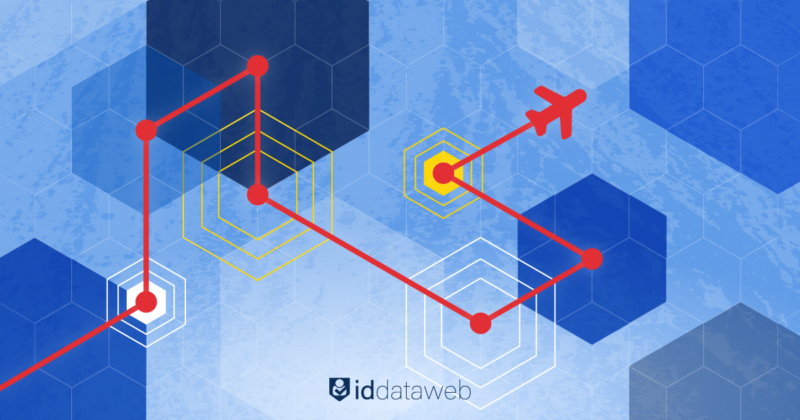Frequent flyer miles and hotel rewards are increasingly attractive targets for cybercrime. Rewards accounts hold real monetary value, yet unlike bank accounts—which customers routinely monitor—almost 45% of loyalty program accounts are used infrequently. For fraudsters, that’s an ideal combination: high-value assets sitting in semi-abandoned accounts with weak access controls. Fraud often goes unnoticed until the account owner tries to book their next trip.
Solving this problem isn’t as simple as enforcing stricter access controls across the board. Enterprises hesitate to add login friction for loyalty members, fearing a negative impact on user experience. And there’s good reason—nearly 80% of travelers rely on loyalty programs, making them a core revenue stream for hospitality and travel businesses. The real solution is more nuanced: enterprises must minimize friction for legitimate travelers while selectively tightening access controls when fraud is suspected.
How loyalty program fraud happens
Account takeover is the most common form of loyalty program fraud. One industry analysis found that 52% of loyalty fraud incidents stem from account takeovers.
Fraudsters use a variety of tactics to gain illicit access to customer accounts:
- Credential stuffing and brute force: Data breaches have spilled billions of login credentials onto the Dark Web. Bots automatically test stolen email/password pairs on loyalty accounts. If a customer reused a breached password, the fraudster can log in successfully.
- Phishing and fake websites: Fraudsters send spoofed travel emails or create lookalike portals to harvest credentials. For example, a “special upgrade offer” email might replicate the branding of a legitimate loyalty program to trick users into entering their login details.
- Social engineering and call center exploits: Some attackers contact customer service directly and manipulate agents into resetting passwords.
- New account fraud: Fraudsters create fake accounts to exploit promotions. They might register dozens of accounts during a “sign-up bonus” campaign or abuse referral programs by referring themselves. Points from these dummy accounts are then consolidated and cashed out.
Major security gaps across the loyalty ecosystem create further opportunities for exploitation. In 2023, a security researcher discovered significant flaws in Points.com that exposed data from 22 million orders, including frequent-flyer numbers, credit card information, and the ability to modify point balances. Although that vulnerability was patched, it underscores how systemic weaknesses in loyalty infrastructure can lead to catastrophic breaches if not proactively secured.
Why securing identity is the key to preventing loyalty program fraud
Since account takeover underpins most loyalty fraud, preventing unauthorized access in real-time is essential. Identity threat detection and risk mitigation (ITDR) technologies provide the tools to achieve this. Unlike traditional systems that react only after fraud occurs, ITDR detects suspicious activity at the point of login or before risky transactions take place.
ITDR verifies that each login originates from a legitimate customer by analyzing multiple signals related to identity and behavior—going beyond credentials or even MFA. The moment a user initiates login, the system assesses contextual risk signals:
- Is the login from a new device or a known device?
- Is the IP address tied to anonymizers or an unusual location?
- Does the behavior resemble a bot?
Low-risk users pass through seamlessly, while high-risk sessions trigger step-up verification such as document verification or device possession checks, minimizing friction for genuine users.
Fraud prevention must also be multi-layered. ID Dataweb’s technology is built around an identity orchestration and risk engine that unifies diverse authoritative identity sources and risk signals—from device fingerprinting and telecom data to behavioral analytics and global watchlists. The orchestration engine dynamically routes each authentication or transaction through the appropriate verification steps based on contextual rules and risk thresholds.
This adaptive approach enables enterprises to define granular, scenario-specific security policies. For example, a login from a new country may prompt a trusted-device check, while a routine login from a familiar device proceeds with only a password. The platform continuously evaluates risk in real time, escalating security only when necessary to preserve a smooth user experience.
If risk is detected, ID Dataweb’s system automatically applies additional verification—such as a biometric selfie, ID document scan, or dynamic knowledge-based question—only to the suspicious user. Legitimate customers rarely encounter these measures, while fraudsters face multiple barriers. Simply possessing valid credentials is no longer enough; they must also bypass sophisticated, context-aware identity defenses.
Conclusion
Loyalty programs are immensely valuable—and therefore prime targets for fraud. With points and miles effectively functioning as a digital currency, airlines and hospitality brands must protect them with the same rigor applied to financial assets.
By investing in multi-layered defenses that verify not just what users know (credentials) but who they are and how they behave, travel and hospitality organizations can make fraud exponentially harder. Identity threat detection and risk mitigation lies at the heart of this strategy. Ensuring high confidence in a user’s identity before granting access minimizes fraud risk while enabling adaptive security challenges based on real-time risk.
Fraudsters are becoming more sophisticated, leveraging stolen credentials and synthetic identities to cash in on points. But companies no longer need to choose between security and convenience. With smarter risk signals and adaptive identity threat detection, travel and hospitality brands can block fraud—without frustrating their most loyal customers.












